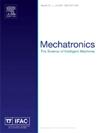协作机器人奇点约束动觉教学方法
IF 3.1
3区 计算机科学
Q2 AUTOMATION & CONTROL SYSTEMS
引用次数: 0
摘要
协作机器人在工业和服务领域都发挥着不可或缺的作用。动觉教学技术允许用户通过直观的手导动作对机器人进行编程,赋予协作机器人方便的部署能力。然而,由于用户主要关注末端执行器的运动,这种手动引导可能会使机器人接近奇点,从而导致性能下降,并对任务可靠性提出挑战。本文提出了一种避免笛卡尔空间奇点的动觉教学方法。该方法的优点是通过不对称地调整手导力与末端执行器速度的映射关系,只抑制了机器人接近奇异点,而对工作空间的其余部分没有影响。对一个六自由度机器人的所有可能的奇点进行了实验。结果表明,该方法有效地缓解了机器人的不协调运动,提高了机器人的操作性能。本文章由计算机程序翻译,如有差异,请以英文原文为准。
A singularity-restrained kinesthetic teaching method for collaborative robots
Collaborative robots play an indispensable role in both industrial and service sectors. Kinesthetic teaching technology allows users to program robots through intuitive hand-guiding actions, endowing collaborative robots with convenient deployment capabilities. However, such manual guidance may bring the robot close to singularities, as users primarily focus on the motion of the end-effector, which leads to performance degradation and poses a challenge to task reliability. This paper proposes a kinesthetic teaching method that avoids singularities in Cartesian space. The advantage of this method is that it only restrains the robot from approaching singularities while having no effects in the rest of the workspace by asymmetrically adjusting the mapping relationship between hand-guiding force and end-effector velocity. Experiments have been conducted on all possible singularities of a 6-DOF robot. The results indicate that the proposed method effectively mitigates uncoordinated motion, and the operational performance of the robot has been enhanced.
求助全文
通过发布文献求助,成功后即可免费获取论文全文。
去求助
来源期刊

Mechatronics
工程技术-工程:电子与电气
CiteScore
5.90
自引率
9.10%
发文量
0
审稿时长
109 days
期刊介绍:
Mechatronics is the synergistic combination of precision mechanical engineering, electronic control and systems thinking in the design of products and manufacturing processes. It relates to the design of systems, devices and products aimed at achieving an optimal balance between basic mechanical structure and its overall control. The purpose of this journal is to provide rapid publication of topical papers featuring practical developments in mechatronics. It will cover a wide range of application areas including consumer product design, instrumentation, manufacturing methods, computer integration and process and device control, and will attract a readership from across the industrial and academic research spectrum. Particular importance will be attached to aspects of innovation in mechatronics design philosophy which illustrate the benefits obtainable by an a priori integration of functionality with embedded microprocessor control. A major item will be the design of machines, devices and systems possessing a degree of computer based intelligence. The journal seeks to publish research progress in this field with an emphasis on the applied rather than the theoretical. It will also serve the dual role of bringing greater recognition to this important area of engineering.
 求助内容:
求助内容: 应助结果提醒方式:
应助结果提醒方式:


